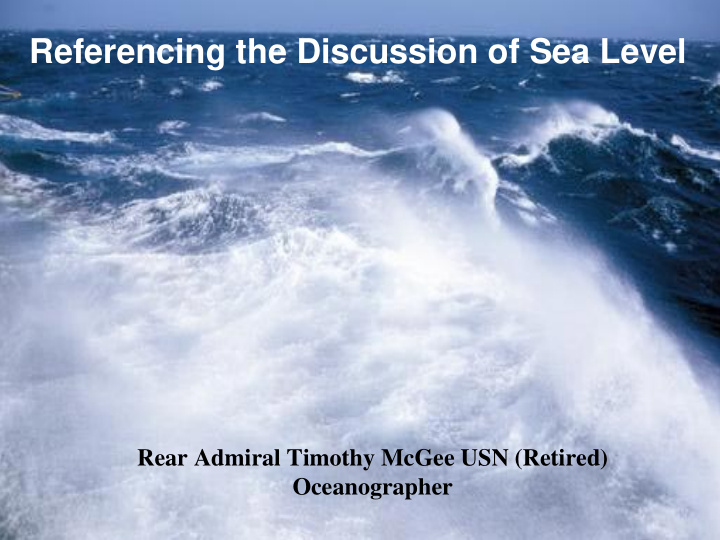



Referencing the Discussion of Sea Level Rear Admiral Timothy McGee USN (Retired) Oceanographer
The Geodetic Reference • Mean Sea Level, Global Positioning System (GPS), and the Geoid The Geodetic Reference System best approximates an absolute (vice relative) reference. GPS data has greatly improved understanding of the differences between the geiod and ellipsoid
Geodetic Reference Systems World Geodetic System (WGS)84 International Terrestrial Reference Frame (ITRF2005)
Vertical Datum (relative reference) for Sea Level Measurement of sea level – hydrographic and bathymetric surveys Typically used to produce nautical charts for Navigation Vertical Charting Datums (references) vary across large geographic locations
Measuring Sea Level Tide Gauge Satellite Altimetry Topex- Poseidon, Jason 1-3 Relative motion of the water and the land Geosat Follow-on Data referenced to various vertical datums Data referenced to the ellipsoid
Trends in Sea Level NOAA National Ocean service, Tides and Currents – Sea Level Trends
Land Subsidence Subsidence process Vulnerable Land Resources Exacerbated by human intervention
Correcting Sea Level Measurements for Land Movement Continually Operating Reference Station (CORS) Modeled Corrections Co-located with a tide gauge Glacial Ice Rebound Model Precise (GPS) measured corrections Glacial Isostatic Adjustment (GIA)
Where We Are Sea level has been rising 0.08-0.12 inches per year (2.0-3.0 mm per year) along most of the U.S. Atlantic and Gulf coasts. The rate of sea level rise varies from about 0.36 inches per year (10 mm per year) along the Louisiana Coast (due to land sinking), to a drop of a few inches per decade in parts of Alaska (because land is rising).
Questions
Recommend
More recommend